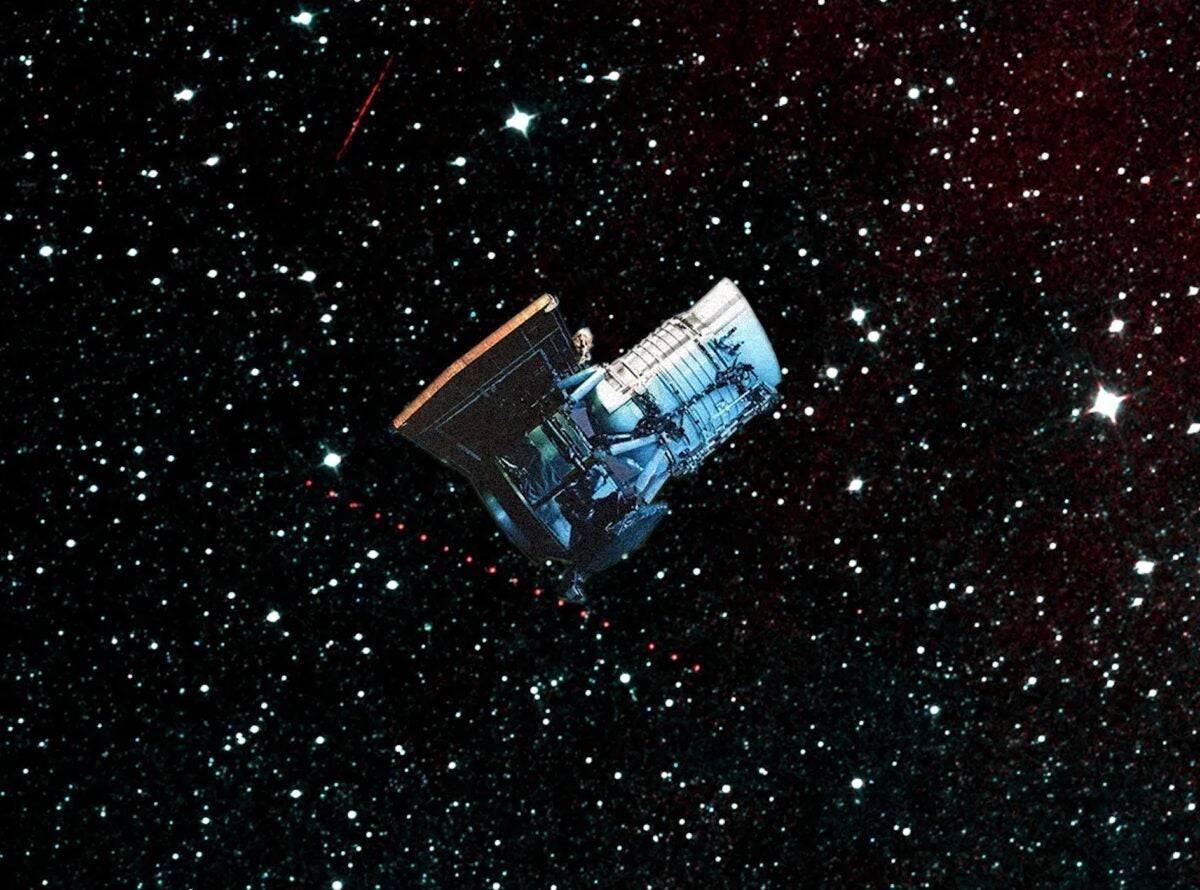After nearly a decade of successful asteroid detection, the space telescope took its final image on July 31.

An artist's rendering of NEOWISE is superimposed over the mission's first image of the asteroid. Credit: NASA/JPL-Caltech
After 10 years and nearly 27 million images, NASA said goodbye to the Near-Earth Object Wide-field Infrared Survey Explorer (NEOWISE) mission last week when its transmitter was turned off. The spacecraft began as a space telescope whose mission was to discover distant galaxies, but it became much more than that by searching for potentially dangerous comets and asteroids throughout our solar system.
Despite his ability to change goals, he was unable to change external influences. According to one NASA Press ReleaseThe recent surge in solar activity has caused Earth's atmosphere to expand, creating drag on the spacecraft, which had no way to propel its orbit upward. Astronomers expect the telescope to burn up in the atmosphere later this year.
The spacecraft completed its final study on July 31, and NASA then recovered all remaining science data before shutting it down on Aug. 8.
“The NEOWISE mission has been an extraordinary success, helping us better understand our place in the universe by tracking asteroids and comets that could be hazardous to us on Earth,” NASA Associate Administrator Nicola Fox said in the statement. “While we are sad to see this courageous mission come to an end, we are excited about the future scientific discoveries it has opened up by laying the groundwork for the next-generation planetary defense telescope.”
When I was WISE
In December 2009, the Wide-field Infrared Survey Explorer (WISE) was launched as a seven-month mission to take infrared images of the entire sky. Those images cast doubt on the existence of Planet X, discovered the brightest galaxy in the universe, and helped astronomers find many black holes and cool stars, which stand out in the infrared wavelengths of WISE's search.
By September 2010, however, the telescope was running out of coolant, causing the spacecraft's heat to interfere with the accuracy of the infrared sensor. So NASA changed course.
The telescope was still able to image nearby objects because of their strong infrared signals, thanks to the heating of the Sun, which stand out against the background sky. The spacecraft's mission was extended and WISE was renamed NEOWISE, with the goal of conducting a study of main-belt asteroids orbiting between Mars and Jupiter. That study ended in February 2011, when the spacecraft was sent into hibernation.
NEOWISE was resurrected in 2013, now tasked with studying the size and composition of comets and asteroids that pass close to Earth as part of the Near-Earth Object Observations Program, the precursor to NASA's program. Planetary Defense Coordination Office.
Related: From discovery to data: How astronomers track near-Earth asteroids
The Earth's lookout
During its lifetime, NEOWISE has taken 1.45 million measurements of 44,000 objects across the solar system, detected 215 near-Earth objects, and found 25 new comets, including C/2020 F3 (NEOWISE)In the end, 26,886,704 exposures were needed.
As NEOWISE burns up in the atmosphere later this year, scientists will be hard at work getting its successor, the Near-Earth Object Surveyor (NEO Surveyor) set for launch in 2027. The new space telescope will employ two heat-sensing infrared sensors capable of spotting dark and bright asteroids as they come within 30 million miles (48.3 million kilometers) of Earth. During its planned five-year mission, NEO Surveyor will detect objects as large as about 460 feet (140 meters), which is about the height of the Great Pyramids.